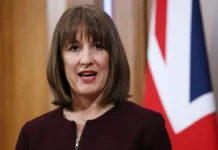Kenyans are bracing for higher electricity bills if Kenya Power’s new tariff review is approved by the Energy and Petroleum Regulatory Authority (EPRA).
Kenya Power submitted a tariff review application to the Epra in October of last year for higher energy charge tariffs that will be in effect for the next three years.
The new tariffs are set to go into effect on April 1.
For years, the utility has pushed for a review of current power tariffs, claiming that its revenue requirements have increased dramatically while electricity revenues have remained constant, forcing it to rely on increased sales.
“In order to achieve this broad mandate, there is a need for an electricity retail tariff that is just and reasonable to allow Kenya Power Company to maintain its financial integrity, attract capital, operate efficiently and compensate investors for risks assumed,” said the company.
“The rationale of this retail tariff review is to incorporate change in electricity sub-sector cost structure and update key assumption with an aim of providing adequate sector revenue requirements,” it said.
Epra has now scheduled public participation for the tariff’s scrutiny, in which the utility has proposed a new tariff of Sh14 per kilowatt-hour (kWh) for customers who use less than 30 units of power per month.
It also intends to implement a Sh21.68/kWh tariff for those who use more than 30 units per month.
Customers who use less than 100 units per month pay Sh10/kWh, while those who use more than that amount pay Sh15.8 per unit under the current tariff, which was approved in November 2018 but was temporarily reduced by Epra in January last year.
This means that if the tariff is passed in its current form, customers whose average monthly usage exceeds 30 units but falls below 100 units will pay Sh21.68 per unit, a 117 percent increase from the current Sh10 per unit.
The new tariff will be a 40% increase for those who use less than 30 units per month, affecting nearly a third of all power customers.
This is due to the fact that, while Kenya Power has 8.9 million customers, Epra estimates that 3 million of them use less than 10 units of electricity per month.
The utility claims that the changes in tariff pricing for these low-income customers will allow them to pay their bills based on their earnings.
“There is a proposal to revise the life-line consumption band for both small commercial and domestic customers from the current 100kWh/month to 30kWh/month. This will align the objectives of the lifeline/social tariff customer category with the correct social class normally defined by the level of income,” said Kenya Power.



















